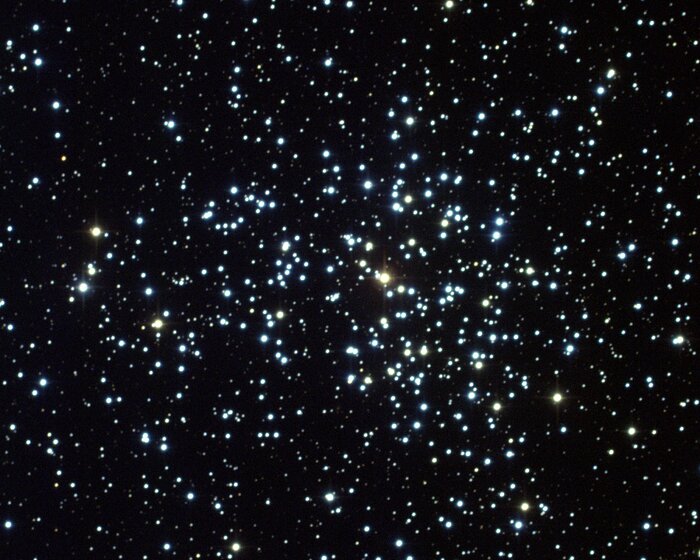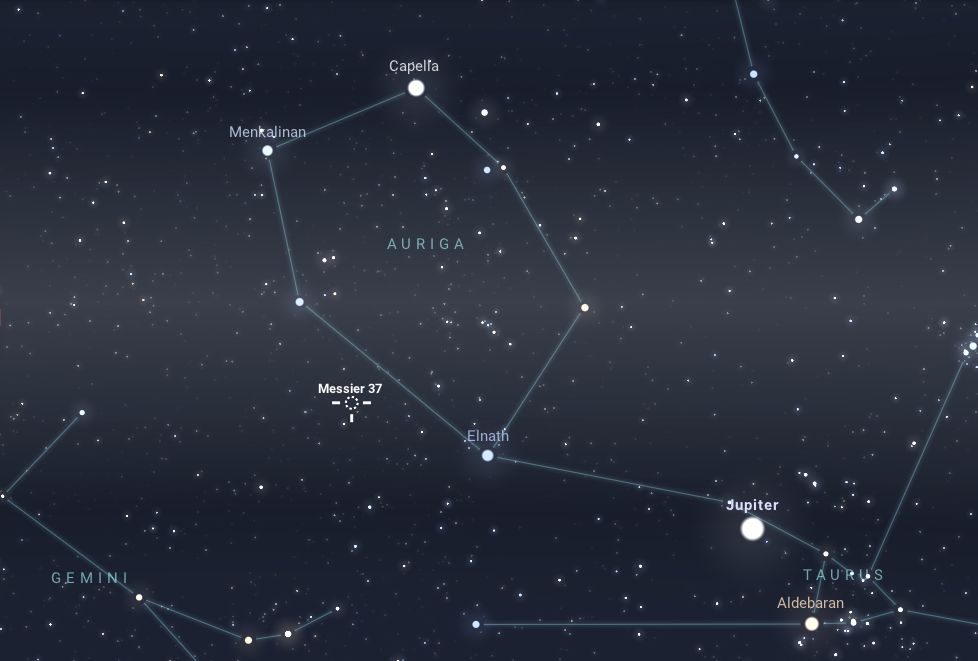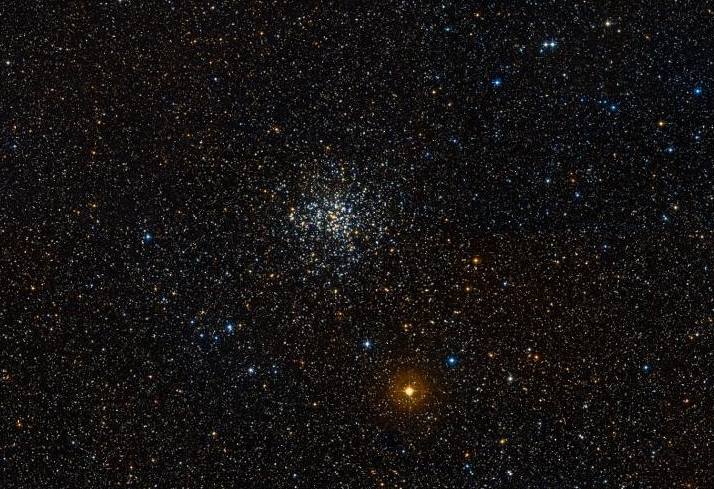M37, sometimes referred to as the “Salt and Pepper Cluster,” is a prominent open star cluster located in the constellation Auriga in the Northern Hemisphere. It is situated approximately 4,511 light-years from Earth, within one of the spiral arms of the Milky Way galaxy called the Orion arm.
First discovered by Giovanni Battista Hodierna before 1654, M37 was later independently rediscovered by the French astronomer Charles Messier in 1764. He included it in his catalogue of deep-sky objects as Messier 37.
Physical Characteristics
M37 is an open star cluster containing over 500 stars, mainly young, hot blue stars, along with a few cooler redder ones. The cluster is estimated to be around 346 million years old, placing it among the younger clusters.
M37 has a looser and more irregular appearance than its neighbour M36. Its nickname, the “Salt and Pepper Cluster,” arises from the way the stars are distributed. When observed through a telescope, the stars appear densely packed, yet their distribution is somewhat irregular. Brighter stars are scattered among fainter ones, giving the cluster a speckled or granular appearance, akin to salt and pepper sprinkled over a dark background. The cluster spans about 24 arcminutes in the sky, which is just a little less than the apparent size of the full Moon.

Observation
With an apparent magnitude of 6.2, M37 is just beyond the threshold of naked-eye visibility. While it may not be visible without optical aid, a pair of binoculars will reveal the cluster as a faint, but distinct patch of light. For a more detailed view, telescopes will show the cluster’s full beauty, allowing individual stars to be resolved, giving a clearer sense of its “salt and pepper” appearance. Through a small to medium telescope, the cluster’s brighter stars become more apparent, and its irregular structure is more pronounced. Larger telescopes will resolve even more stars, revealing the cluster’s dense core and the varying colours of its stars, ranging from blue giants to cooler, red stars.
M37 is best observed from the Northern Hemisphere, especially during the winter months when Auriga is well-placed in the evening sky. This period typically spans from November to February, when the constellation is high in the sky and visible for longer stretches of the night. The cluster is relatively easy to locate using a star chart or astronomy app, making it a popular target for amateur astronomers. The combination of its brightness and its striking, speckled appearance makes it a rewarding object for both visual observation and astrophotography.




